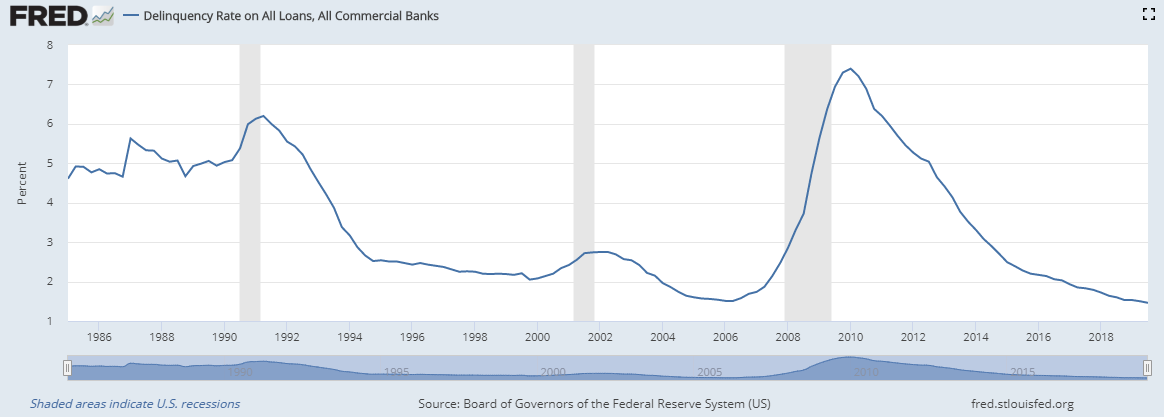Let's take a look at the general situation of the US economy by mid January 2020.
You know, in the long-term (and we are long term investor) it is the economy that drives the markets.
There are mixed signals (as most of the times), but the chances of a recession starting during Q1 and Q2 of 2020 are still few. But they are slowly increasing. Let's see how.
Inflation is very low, which means that productivity is succeeding in offering new goods/services to an increasing demand from population.
This is very healthy: when inflation is rising, people are consuming more than economy can supply and this leads to a crisis.
But inflation has recently gone from 1.77% (Oct-2019) to the actual 2.29% (Dec-2020).
Not a scaring change yet, but we need to monitor this data closely during next months.
Companies are doing quite fine. The manufacturing ISM is not brilliant, but not bad.
And companies can still find credit loans easily, which is good for investments (this data is mainly driven by FED's decisions about interest rates)
See how last recession (2008-2009) boosted the difficulty in getting money by companies, creating a vitious circle: recession-lack of credit-less investments-more recession.
The Yield curve is not in a good shape: it inverted in Fall 2019, and now it is rising up back again. This is typical to happen before recessions, BUT:
- it could take years before a recession arrives
- everybody is looking at this curve and worring about (this also caused some of the drops of markets in Summer 2019) and the FED reacted promptly so far.
So let's see how it goes in future months before panicking.
The Housing market is doing very fine right now: it was the original sin that caused the 2008-2009 crash of markets. Now it is slowly and healthy recovering force and sustainability.
The Labour market is also doing very fine right now: unemployment rate is at its lowest levels.
More people working = more people consuming and respecting their debt obligations (see picture from FRED).
The concern here is that there is likely no space for further improvements. So, any deterioration of the employment could be a trigger for a drawdown.

Conclusions:
1. at a wide look, in January 2020 the US economy looks still strong and no recession is likely in the short term
2. markets fall sharply when there is a recession, which is unlikely now, but
... markets can drop anytime if/when valuations of companies are getting too high compared to their "real" value.
This is probably what happened in late 2018: prices (= level of indexes) went too far high, and they returned to a more reasonable level.
After the long rally Sep19 - Jan20 a small drawdown (3-5%) of indexes is totally possible without affecting the general bullish outlook given by the macro data.
The HST model is designed to respond to these smaller drops after a while, but it is stronger in avoiding the big drops happening during recessions / bear markets.
The HST model gives signals every day to members of the Educational HST service.
Write to This email address is being protected from spambots. You need JavaScript enabled to view it. for more information.
